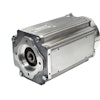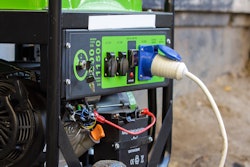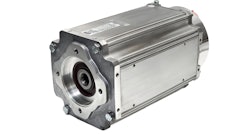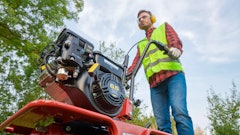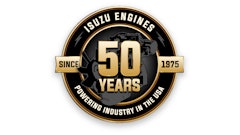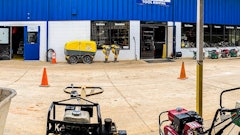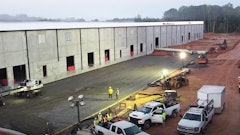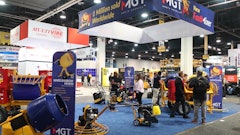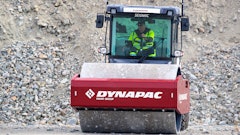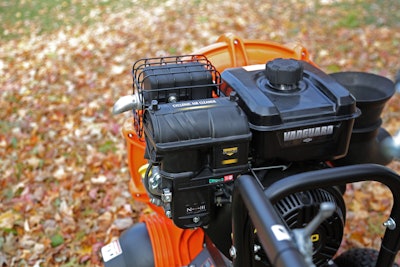
Across demanding industries like landscaping, construction, and equipment rental, performance is non-negotiable. Business profitability and jobsite productivity depend on reliable and efficient power sources. However, the core technology powering these machines have undergone significant changes in recent years.
Today's commercial-grade small engines deliver maximum uptime, reduced total cost of ownership (TCO) and peak performance. Modern engine technology is engineered to solve the critical operational challenges faced by professionals across diverse, demanding fields.
Engine Architecture
Over the years, the architecture of small engines has fundamentally changed, moving from mechanical to electronic control. At the core of this advancement is the engine control module (ECM), which processes real-time sensor data to actively manage performance. This allows for a level of precision in fuel delivery and engine speed management that was previously unattainable, enabling greater power, efficiency, and responsiveness in commercial equipment.
 Briggs & Stratton
Briggs & Stratton
This intelligent control extends to power delivery with electronic throttle control (ETC), ideal for applications with high load demands. It uses a flywheel speed sensor to detect load changes and the ECM to instantly adjust the throttle, maintaining smooth, consistent power. Unlike older mechanical systems, this tighter RPM control prevents the engine from losing speed under load so it can deliver more usable power when it's needed most.
While electronic controls optimize how an engine performs minute by minute, other key innovations are engineered to reduce long-term costs and maximize uptime.
More about engines on ForConstructionPros.comDiesel Engine Maintenance Tips for Peak Performance - Three engine manufacturers share their top service tips to maintain peak performance year-round. Smart Engine Diagnostics Tools Change the Game of Equipment Service - Mobile apps coupled with small diagnostic devices can be connected to any piece of equipment. Small Engine Features to Help Keep Rental Equipment Out of the Shop - Engines are being built to be stronger and smarter, in an effort to help prevent equipment from breaking down. |
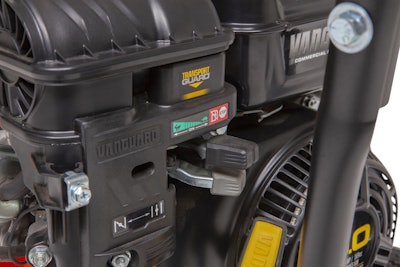 The TransportGuard system, available on Vanguard single-cylinder engines, features a 3-in-1 control lever that integrates the fuel and ignition shutoffs into a single action. Briggs & Stratton
The TransportGuard system, available on Vanguard single-cylinder engines, features a 3-in-1 control lever that integrates the fuel and ignition shutoffs into a single action. Briggs & Stratton
Uptime & Reduced Maintenance
A focus on lowering the TCO has driven innovations aimed at extending maintenance intervals and preventing common causes of engine failure. For any business running commercial equipment, minimizing downtime is crucial for profitability. All of this makes these long-term reliability features as important as performance.
To better protect engines in dusty conditions, manufacturers have introduced advanced air filtration systems. For example, cyclonic air filtration is designed to maximize durability by extending filter service intervals up to 600 hours, helping to cut down on maintenance and improve equipment uptime.
To combat common and costly engine damage during transport, manufacturers have engineered targeted solutions. For example, should rental customers neglect to shut off the fuel, a frequent occurrence within the rental industry, systems have been integrated into single-cylinder engines as a direct answer to the problem. These solutions prevent fuel from contaminating the oil, which reduces unscheduled oil changes and eliminates a primary cause of starting issues. For rental operations, this ensures that equipment is ready to rent when customers need it, minimizing downtime and directly enhancing ROI.
How AI is Advancing Engine Technology
Beyond the tangible features of current engines, artificial intelligence (AI) is another powerful tool in the engineering process. Using AI, engineering teams are able to analyze vast amounts of field data to identify performance trends, which leads to quicker troubleshooting and more effective design improvements.
In the design phase, AI helps generate and compare alternative designs to assess risk and optimize components. It is also applied to analyze complex test data, uncovering insights that might be missed by traditional methods. This continued integration of AI into product development is building a more advanced engineering toolbox for the company.
Today’s advanced small engines are engineered to solve critical business problems. The integration of intelligent electronics ensures peak performance and fuel efficiency on the job, while innovations in maintenance-reducing systems directly lower the TCO.
For any business that relies on powered equipment, the result is less time in the shop, more time on the job, and enhanced reliability for peak performance.

